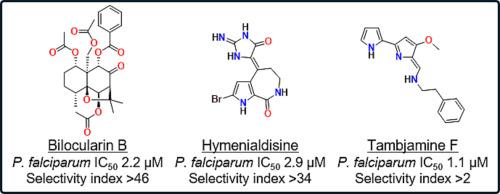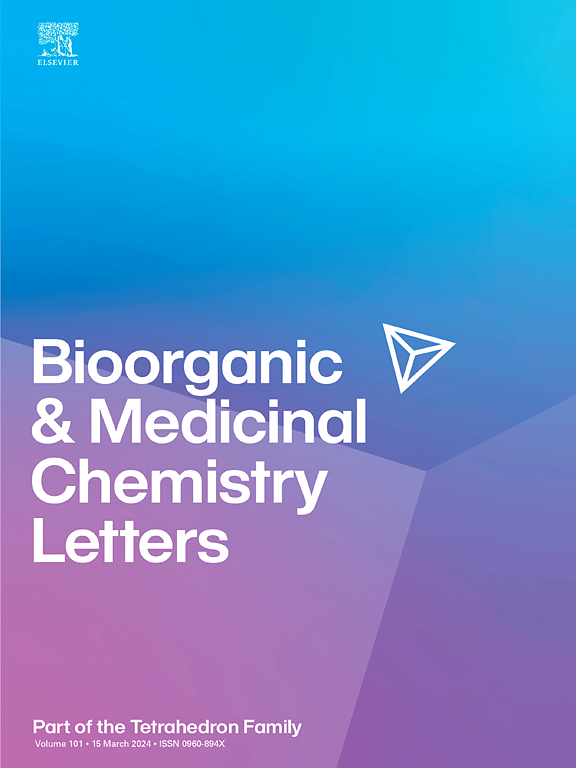从澳大利亚植物和海洋物种中提取的铃黄胺、二氢-β-琼脂呋喃和吡咯氮平的抗疟原虫活性。
IF 2.2
4区 医学
Q3 CHEMISTRY, MEDICINAL
引用次数: 0
摘要
疟疾是发病和死亡的一个重要原因,估计2023年将有2.63亿例病例和59.7万例死亡。虽然有预防和治疗疟疾的有效药物组合,但疟原虫的耐药性正在损害目前的所有选择。这种情况意味着需要对新的疟原虫药物靶点起作用的新药。从黄花蒿及其衍生物中提取的天然产物,包括青蒿素,一直是抗疟药物的重要来源。在这项研究中,我们从NatureBank天然产物库中研究了43种化合物对无性期恶性疟原虫的体外活性。从澳大利亚植物和海洋样品中分离得到4个具有抗疟原虫活性的化合物,分别为海洋海鞘(Sigillina signifera)中的tambjamine F (IC50为1.06 μM)和tambjamine C (IC50为3.40 μM),雨林植物Maytenus bilocularis中的bilocularin B (IC50为2.18 μM)和海绵棘藻(Acanthella costata)中的hymenialdisine (IC50为2.90 μM)。本文章由计算机程序翻译,如有差异,请以英文原文为准。

Antiplasmodial activity of tambjamines, dihydro-β-agarofurans and pyrroloazepines derived from Australian plant and marine species
Malaria is a significant cause of morbidity and mortality, with 263 million cases and 597,000 deaths estimated in 2023. While effective drug combinations are available to prevent and treat malaria, Plasmodium parasite drug resistance is compromising all current options. This situation means that new drugs that act on novel Plasmodium drug targets are needed. Natural products, including artemisinin, derived from Artemisia annua, and its derivatives, have been an important source of antimalarials. In this study we investigated a panel of 43 compounds from the NatureBank natural product library for in vitro activity against asexual stage P. falciparum parasites. Four compounds isolated from Australian plant and marine samples were identified with novel antiplasmodial activity - tambjamine F (IC50 1.06 μM) and tambjamine C (IC50 3.40 μM) from the marine ascidian Sigillina signifera, bilocularin B (IC50 2.18 μM) from the rainforest plant Maytenus bilocularis and hymenialdisine (IC50 2.90 μM) from the marine sponge Acanthella costata.
求助全文
通过发布文献求助,成功后即可免费获取论文全文。
去求助
来源期刊
CiteScore
5.70
自引率
3.70%
发文量
463
审稿时长
27 days
期刊介绍:
Bioorganic & Medicinal Chemistry Letters presents preliminary experimental or theoretical research results of outstanding significance and timeliness on all aspects of science at the interface of chemistry and biology and on major advances in drug design and development. The journal publishes articles in the form of communications reporting experimental or theoretical results of special interest, and strives to provide maximum dissemination to a large, international audience.

 求助内容:
求助内容: 应助结果提醒方式:
应助结果提醒方式:


